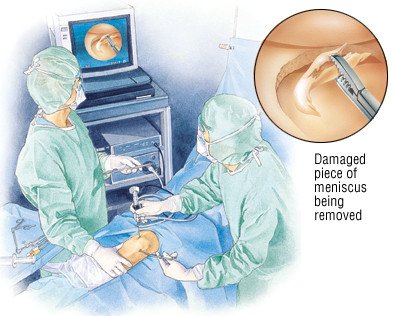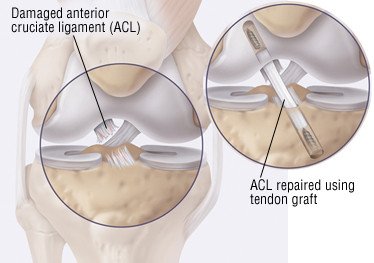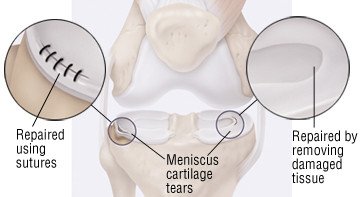Arthroscopic Surgery
Medically reviewed by Drugs.com. Last updated on Jan 22, 2024.
What is Arthroscopic Surgery?

Arthroscopic surgery refers to procedures in which surgeons operate on joints through small incisions. This is in contrast to the single large incision used in traditional open surgery.
Using an arthroscope, surgeons can illuminate and magnify the internal structure of joints. An arthroscope is a thin, tubular instrument. It contains a light source and specialized lenses.
Arthroscopic surgery uses small incisions. So recovery is usually less painful than traditional surgery.
In addition, arthroscopic surgery:
- Has fewer complications
- Requires a shorter hospital stay (or no stay)
- Is less expensive
- Allows a quicker recovery
|
|
Most arthroscopic procedures are done on the knee joint. Others involve the shoulder. Arthroscopic surgery can also be done on the ankle, elbow, wrist and hip. But these procedures are much less frequent. And success is less certain.
What It's Used For
You doctor may recommend arthroscopic surgery for one or more of the following:
- To remove small bits of bone or cartilage that are floating in the joint space
- To repair or remove torn ligaments
|
|
-
To remove damaged cartilage
|
|
- To remove inflamed joint lining (synovium)
- To reattach a bone fragment that has broken off the end of a bone and is in a joint
- To transplant cartilage (usually limited to knees with limited cartilage injury)
- To drain fluid from an infected joint
- To look at the joint directly
- To take a sample of joint tissue when the cause of knee symptoms is not clear
Preparation
To prepare for surgery, the doctor will review your allergies and your medical and surgical history. Your doctor will ask for a list of all medications that you are taking. This will include prescription drugs, nonprescription medicines and herbal remedies.
Before your procedure, your doctor may arrange for you to meet with a physical therapist. The therapist will discuss your postoperative care and rehabilitation program. If necessary, the therapist may fit you for a brace or sling. He or she may teach you how to walk with crutches.
Do not eat or drink anything after midnight the night before surgery. Dress in casual clothes for your trip to the hospital. Leave your jewelry at home.
If you have been using any special orthopedic equipment (crutches, sling, brace, knee immobilizer), bring it to the hospital. Arrange for someone to drive you home after surgery.
How It's Done
To prepare for surgery, the doctor will review your allergies and your medical and surgical history. Your doctor will ask for a list of all medications that you are taking. This will include prescription drugs, nonprescription medicines and herbal remedies.
Before your procedure, your doctor may arrange for you to meet with a physical therapist. The therapist will discuss your postoperative care and rehabilitation program. If necessary, the therapist may fit you for a brace or sling. He or she may teach you how to walk with crutches.
Do not eat or drink anything after midnight the night before surgery. Dress in casual clothes for your trip to the hospital. Leave your jewelry at home.
If you have been using any special orthopedic equipment (crutches, sling, brace, knee immobilizer), bring it to the hospital. Arrange for someone to drive you home after surgery.
Follow-Up
In the days following your surgery, keep the area of your incisions clean and dry. Change your bandages as directed by your doctor. Rest your joint, elevate it and apply ice packs as you have been instructed. Follow the rehabilitation program developed by your doctor and physical therapist. Your doctor may prescribe pain medications, antibiotics or other treatments. Take these exactly as prescribed.
Your doctor will tell you when to return for a follow-up office visit. At this visit, the doctor removes any stitches and assesses the condition of your joint.
Additional visits may be scheduled based on the specific type of surgery and your progress.
Risks
Possible complications of arthroscopic surgery include:
- Accidental damage to cartilage or ligaments inside the joint
- Excessive bleeding inside the joint
- Accidental damage to nerves or blood vessels near the joint
- Inflammation and formation of blood clots inside veins, most often in the leg
- Joint infection
- Breakage of a surgical instrument inside the joint
- Allergic or other reaction to an anesthetic
Complications occur in very few arthroscopic surgeries. Overall, the risk of complications in arthroscopic surgery is much less than for conventional open surgery.
When To Call A Professional
After arthroscopic surgery, call your doctor immediately if you:
- Have increased pain or swelling in the affected joint, especially if the joint is also hot, tender and red
- Develop a fever
- See fluid draining from an incision site, especially fluid that is bloody, foul-smelling or discolored
- Notice that a stitch has come undone
- Observe that the area near a stitch is red and tender
- Develop numbness or tingling near your repaired joint
Additional Info
National Institute of Arthritis and Musculoskeletal and Skin Diseases
http://www.niams.nih.gov/
American Academy of Orthopaedic Surgeons (AAOS)
http://www.aaos.org/
American Orthopaedic Society for Sports Medicine
http://www.sportsmed.org/
Further information
Always consult your healthcare provider to ensure the information displayed on this page applies to your personal circumstances.



